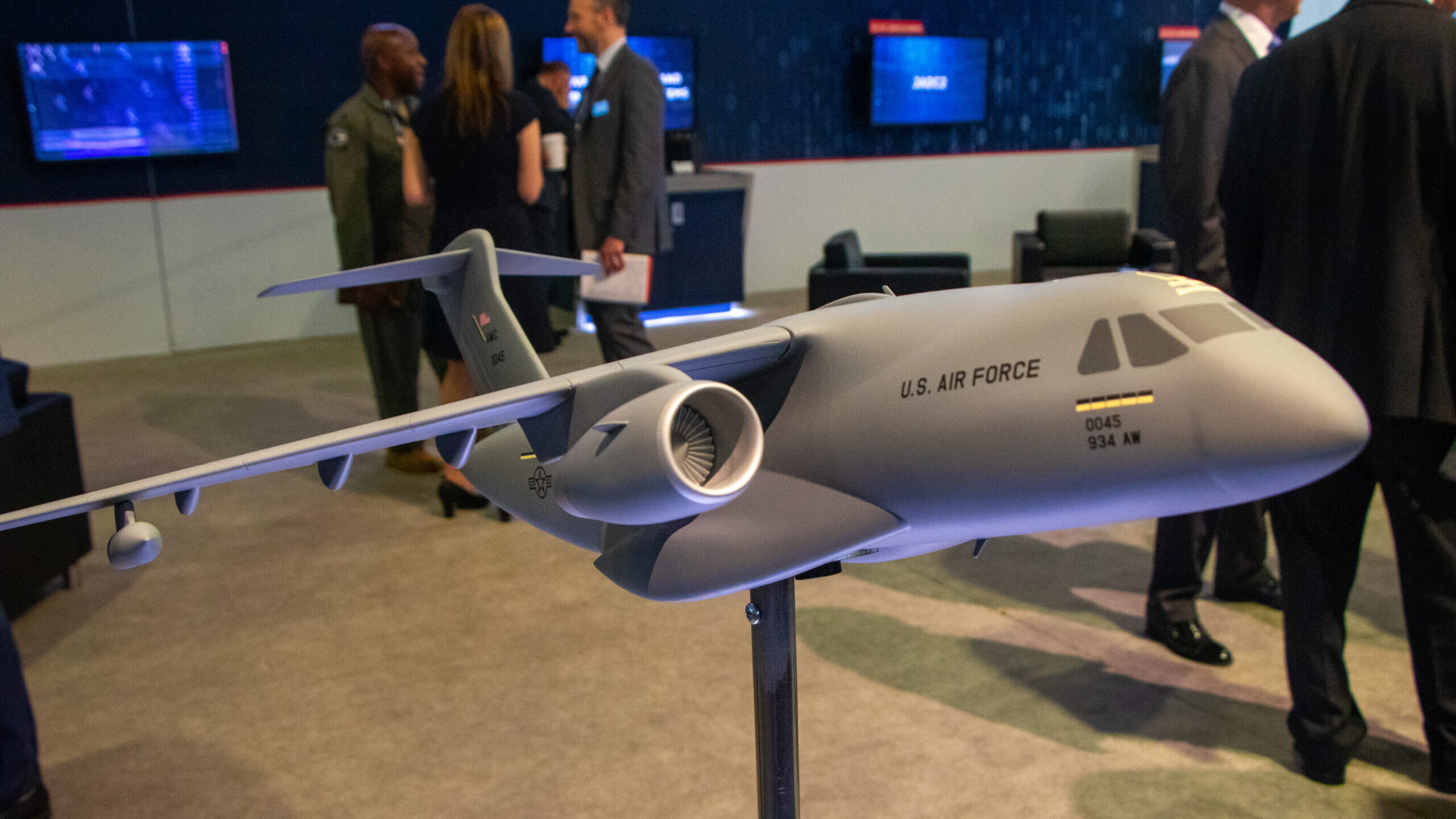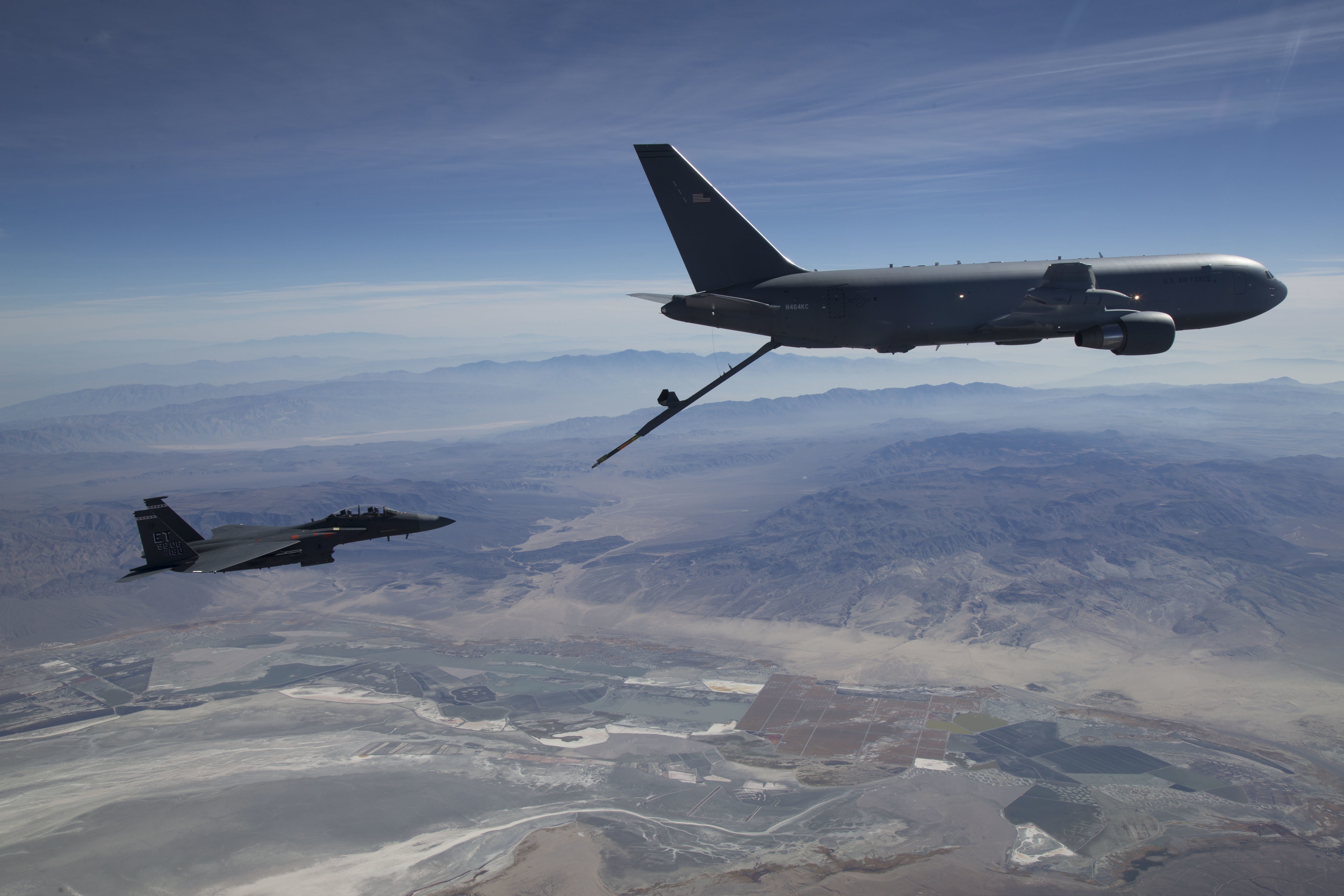Kc 46 Issues - The Ukrainian army could create three new heavy brigades with all these tanks and combat vehicles.
Can a man from South Carolina make a difference in Ukraine? Brian Wright was determined to find out.
Kc 46 Issues

The US Air Force announced in June that it was "seeking resources" for the next installment in its program to replace more than 400 aging aerial refueling tankers.
Rockwell Collins Provides Kc 46a Cockpit Details
The new effort is often referred to as a "bridge tanker," meaning an interim aircraft for future generations of refuelers.
Aerial refueling of US and allied aircraft is essential to the performance of many missions, particularly in the Pacific where distances often exceed the operational reach of combat aircraft.
However, the existing tanker ships are destroyed by age. The most common refueler in the fleet is the KC-135, an aircraft based on the same airfield as the older Boeing 707 jetliner that first entered service in 1957.
After producing 179 refueling Boeing KC-46 Pegasus, the Air Force has proposed the purchase of 140-160 additional tankers based on modified commercial transport.
Boeing Racks Up $402m Cost Overrun On Kc 46 Tanker
The decision to enter full-scale production for the Pegasus was delayed by problems with its remote vision system, which uses direct fuel to allow crews to get a camera in the cockpit the aircraft through extended lift from the rear of the aircraft.
The Air Force recently approved an improved vision system design that is expected to solve the glare problem that occurs during the 7% of typical flight days when the sun is low in the sky.
The Air Force has spent $1.6 billion to flight-test the Pegasus, and it is now proven to fuel the most fighter jets in the combined fleet.
Since the service does not want to repeat this costly and lengthy process with another aircraft, the KC-46 tanker appears to be an obvious candidate for the next supply increase.
Kc 46a Pegasus: How Is Boeing's Next Gen Tanker Working Out?
However, it is possible that Airbus will bring its "multirole tanker transport" based on the A330 jetliner, even though the Air Force rejected that solution in a competition ten years ago.
Airbus' choice is getting pushback in Congress from lawmakers tied to Alabama, where Airbus would send jetliners to be converted to a tanker configuration if it were the US buyer.
An Airbus tanker could be offered together with Lockheed Martin, including aerial refueling opportunities with Airbus (Boeing and Lockheed both add to my thinking group).
If the Air Force gets to the point of competing for the next several tankers, the outcome is unlikely to be any different from the game a decade ago, in which the Under Secretary of Defense announced Boeing's entry as "obvious". winner."
Rep. Wittman: Air Force Should Compete Kc Y Tanker Program
In other words, it wasn't close. Here are four reasons why the Air Force doesn't want Airbus in the future of aerial refueling.
Size matters. This is an example where bigger is not better. The Airbus tanker is 40% heavier than the KC-46 and takes up about 50% more space on the ground.
If all Air Force refueling missions were conducted from Dallas-Fort Worth Airport, that might not be a problem. But in places like the Pacific, usable airfields are often very limited in terms of space, so a bigger plane means less ramp space for fewer tankers , or less space for fighters and bombers.

The Airbus tanker also has a larger turning radius than the KC-46 (150 feet vs. 129 feet), putting more pressure on the space available at distant airfields.
Boeing Reports $3.3 Billion Loss As Kc 46, Other Defense Programs Drag
And because it's so much bigger, with 30% more drag than the 767 airframe on which the KC-46 is based, the Airbus tanker burns 1,000 gallons more fuel.
. Multiply the number of hours flown by the price of jet fuel, and operating costs over a 30-year service life are much higher than the KC-46.
Fleet diversity increases costs. The Air Force has repeatedly said it needs to reduce the number of aircraft types in its fleet to save money. When fewer planes are operated, each tail costs more to operate because economies of scale are lost.
A person deciding which aircraft is a bridge tanker should take into account the fact that adding another type of aircraft to the fleet means new training programs for pilots and maintainers, special stores of spare parts, building hangars that can accommodate larger aircraft, and so on. Other costs.
Kc 46's New Vision System In Limbo As Panoramic Issues Come Into View
A large fleet of KC-46 refuelers is fundamentally cheaper to maintain than a split fleet of two aircraft types, even if the fuel consumption per flight hour were the same - which it isn't. This is the main reason the Air Force is eager to retire its small fleet of KC-10 tankers, even though they are newer than the KC-135s.
Capacity building will be inevitable. Although the KC-46 tanker came from a commercial airfield, it took ten years to develop, because it had to meet the special requirements of the 738 Air Force. It doesn't look like the Air Force is going to settle for a less capable tanker next time.
Boeing has chosen to build the KC-46 on a dedicated assembly line, while the Airbus tanker is built on a commercial assembly line and modified elsewhere. While installing all the necessary facilities, such as offensive and defensive systems, unusual engineering challenges are likely to arise.

For example, the KC-46 is equipped with flight deck armor to protect the crew and is hardened against electromagnetic shocks generated by nuclear weapons. Airbus has to comply with all kinds of new requirements, otherwise the Air Force will end up with a less flexible fleet of different refuels.
Boeing Kc 135 Stratotanker
The confirmation will take time. The Airbus Tanker is not certified to the standards required by the Air Force by civil aviation authorities. Its operation within US airspace would have to be thoroughly evaluated by the Federal Aviation Administration, and the time needed to complete that task could be long.
In addition, each of the 15 aircraft types for which the KC-46 is licensed must be certified by a regulatory agency within the Air Force for use as a fuel. This would require hundreds of millions of dollars and several years to achieve, creating costs that additional KC-46 tanks would not incur.
Bottom line: The Airbus Tanker is like a buster-buster for the Air Force, and many of its costs, such as post-production sustainability, are beyond the company's ability to control. So the main function of the Airbus proposal in any competition to make the bridge tanker is to dictate the characteristics of the winning Boeing bid. A KC-46 Pegasus from the 97th Airlift Wing, assigned to the 56th Air Refueling Squadron, Altus Air Force. On December 7, 2020, an F-16 Fighting Falcon delivers fuel to a base in Oklahoma. The KC-46 has agreed to refuel the F-15 Eagle and all variants of the F-16 on missions with US Transportation Command functions.
WASHINGTON - The US Air Force needs more air tankers to close the gap between current capabilities and the next-generation KC-Z refueling aircraft. The Boeing KC-46A is an option, as is Lockheed Martin's LMXT, which is a modified version of the Airbus A330 Multi Role Tanker Transport.
Israel Finally Orders Four Boeing Kc 46a Pegasus For Its Air Force
The KC-46A Pegasus is the newest Boeing-designed tanker used for mid-air refueling of aircraft. In development for more than a decade, the KC-46A takes over operations previously handled by the KC-135 Stratotanker and the KC-10 Extender. There are propellant and pipeline and drogue systems compatible with international refueling procedures capable of refueling US, coalition and coalition military aircraft.
The Air Force first contracted Boeing in 2011 to build 179 KC-46As to modernize and replace the more than 60-year-old KC-135 fleet. Built at Boeing's factory in Everett, Washington, the KC-46A is a version of the Boeing 767 commercial passenger plane, and will "roll off the line as a freighter with 767-2C supplies that will become a tanker Armed KC-46. ," at Wright-Patterson Air Force Base. According to the 88th Air Base Wing.
As of December 5, 2022, Boeing says the KC-46A has made more than 400 sorties per month and has loaded 94 million pounds of fuel to aircraft around the world. It is capable of holding over 210,000 pounds of fuel during takeoff.

Unlike the KC-135 and KC-10 that it is designed to replace, the KC-46A fuels the aircraft with its operators using a remote vision system of cameras and sensors to enhance the to the aircraft receiving its instructions.
Kc 46 Tanker's Boom Issue Will Prevent A 10 Refueling For Years
Technical problems with the plane, including problems with the RVS, have cost Boeing billions of dollars in repairs and delayed its full integration into the Air Force.
Cameras and sensors can distort the boom operator's view or make it difficult to see a picture in certain lighting, so the boom runs into other aircraft mid-flight. The Air Force identified the problem as a Category I defect, one of the most serious problems with the aircraft.
In January 2022, Boeing recorded a 14 percent decline in defense business sales, partly due to the poor performance of the KC-46A and technical problems.
In April 2022, Boeing agreed to a plan with the US Air Force
The Air Force's Troubled Boeing Kc 46 Tankers Leak Fuel Excessively
Kc 46 cockpit, kc 46 plane, kc 46 a, kc 46 tanker, kc 46 pegasus, kc 46 tanker program, kc 46, kc 46 model, kc 46 aircraft, kc 46 boom, kc 46 bases, kc 46 engine

0 Comments